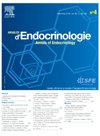内分泌器官在TCDD基于生理的毒物动力学(PBTK)模型中的表现
IF 2.9
3区 医学
Q3 ENDOCRINOLOGY & METABOLISM
引用次数: 0
摘要
内分泌干扰物(EDCs)是一种常见的环境污染物,对多种生物系统,特别是内分泌系统有重要影响。二恶英是一类众所周知的EDCs,与人类甲状腺和生殖疾病有关。其中,2,3,7,8-四氯二苯并-对二恶英(TCDD)毒性最大,由于其亲脂性,具有持久性和生物蓄积性。了解TCDD的毒性动力学对于评估其健康风险至关重要。鉴于其复杂的代谢bb0,基于生理的毒物动力学(PBTK) -基于生理的药代动力学(PBPK)模型的延伸-提供了一种利用体外和体内数据估计异种生物动力学的计算机方法。我们回顾了TCDD的现有PBTK模型,特别关注内分泌器官的纳入。方法系统检索Pubmed、EMBASE和谷歌Scholar数据库中截至2024年10月发表的PBTK模型。共纳入408篇文献,其中31篇符合纳入标准。结果大多数PBTK模型没有明确考虑内分泌组织。相反,他们将器官大致分为缓慢灌注和充分灌注两类。只有少数模型纳入了内分泌相关结构,其中3个模型包括胎盘,2个模型包括乳腺。结论目前还没有PBTK模型能够独立评估TCDD毒性动力学背景下的内分泌器官,如甲状腺、睾丸或卵巢。鉴于越来越多的证据表明EDC对健康有影响,将内分泌器官纳入PBTK模型可以增强我们对EDC毒性动力学及其不良影响的理解。本文章由计算机程序翻译,如有差异,请以英文原文为准。
Representation of endocrine organs in TCDD physiologically-based toxicokinetics (PBTK) models
Introduction
Endocrine disruptors (EDCs) are common environmental contaminants with concerning effects on multiple biological systems, notably the endocrine system [1]. Dioxins, a well-known class of EDCs, have been associated with thyroid and reproductive disorders in humans [2], [3]. Among them, 2,3,7,8-tetrachlorodibenzo-p-dioxin (TCDD) is most toxic, characterized by its persistence and bioaccumulation due to its lipophilic nature. Understanding TCDD toxicokinetics is crucial for assessing its health risks. Given its complex metabolism [4], physiologically-based toxicokinetics (PBTK)–an extension of physiology-based pharmacokinetic (PBPK) models–provide an in silico approach to estimate xenobiotics kinetics using in vitro and in vivo data. We reviewed the existing PBTK models for TCDD, with a particular focus on the inclusion of endocrine organs.
Methods
A systematic search was conducted in Pubmed, EMBASE and Google Scholar for PBTK models published up to October 2024. A total of 408 articles were identified, of which 31 met the inclusion criteria for review.
Results
The majority of PBTK models did not explicitly account for endocrine tissues. Instead, they broadly categorized organs as either slowly or richly perfused. Only a few models incorporated endocrine related structures, with the placenta included in three models and the mammary gland in two.
Conclusions
No PBTK models have independently assessed endocrine organs such as the thyroid, testis, or ovaries in the context of TCDD toxicokinetics. Given the mounting evidence of EDC-related health effect, integrating endocrine organs into PBTK models could enhance our understanding of EDC toxicokinetics and their adverse effects.
求助全文
通过发布文献求助,成功后即可免费获取论文全文。
去求助
来源期刊

Annales d'endocrinologie
医学-内分泌学与代谢
CiteScore
4.40
自引率
6.50%
发文量
311
审稿时长
50 days
期刊介绍:
The Annales d''Endocrinologie, mouthpiece of the French Society of Endocrinology (SFE), publishes reviews, articles and case reports coming from clinical, therapeutic and fundamental research in endocrinology and metabolic diseases. Every year, it carries a position paper by a work-group of French-language endocrinologists, on an endocrine pathology chosen by the Society''s Scientific Committee. The journal is also the organ of the Society''s annual Congress, publishing a summary of the symposia, presentations and posters. "Les Must de l''Endocrinologie" is a special booklet brought out for the Congress, with summary articles that are always very well received. And finally, we publish the high-level instructional courses delivered during the Henri-Pierre Klotz International Endocrinology Days. The Annales is a window on the world, keeping alert clinicians up to date on what is going on in diagnosis and treatment in all the areas of our specialty.
 求助内容:
求助内容: 应助结果提醒方式:
应助结果提醒方式:


